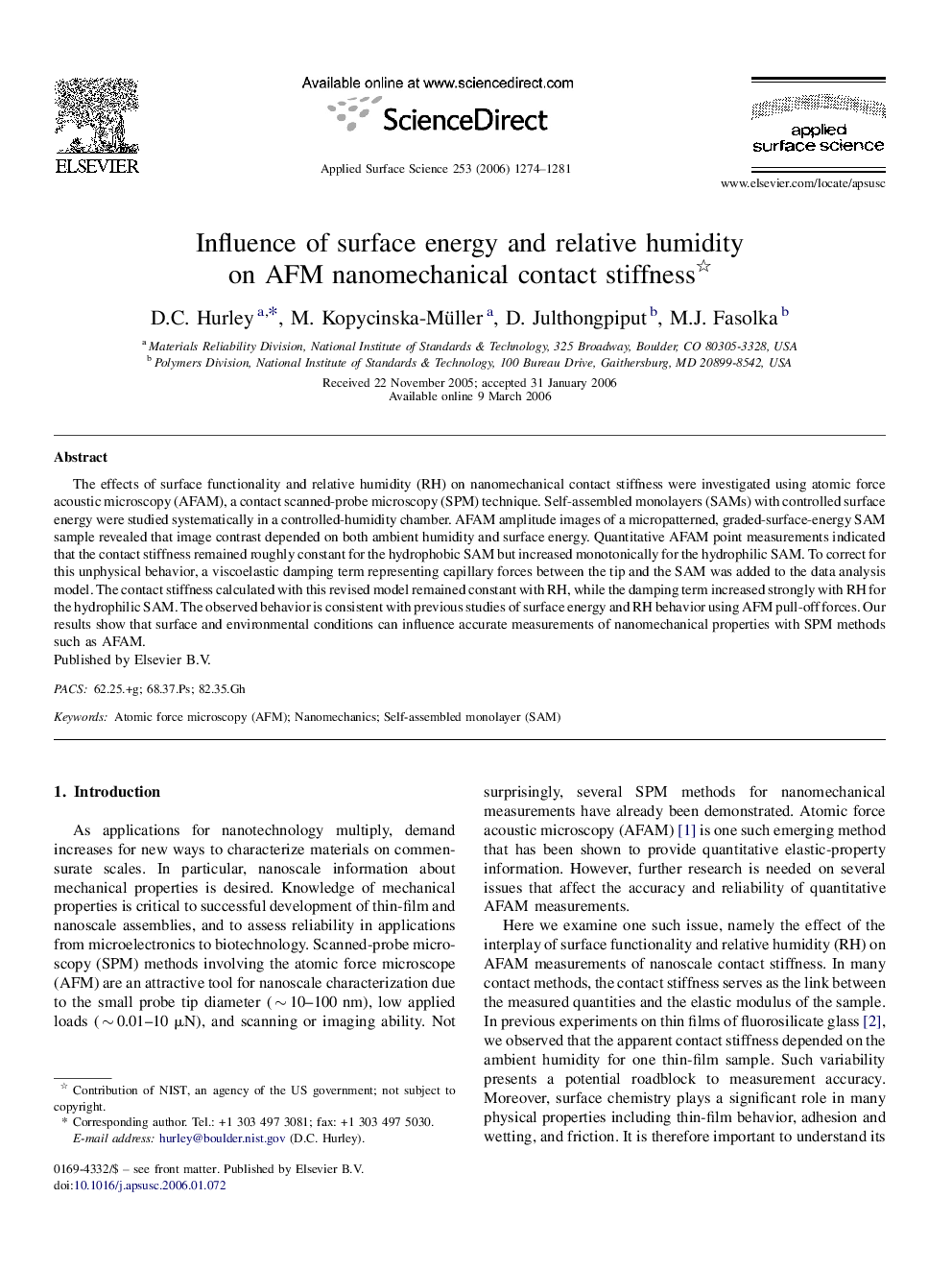| Article ID | Journal | Published Year | Pages | File Type |
|---|---|---|---|---|
| 5370144 | Applied Surface Science | 2006 | 8 Pages |
The effects of surface functionality and relative humidity (RH) on nanomechanical contact stiffness were investigated using atomic force acoustic microscopy (AFAM), a contact scanned-probe microscopy (SPM) technique. Self-assembled monolayers (SAMs) with controlled surface energy were studied systematically in a controlled-humidity chamber. AFAM amplitude images of a micropatterned, graded-surface-energy SAM sample revealed that image contrast depended on both ambient humidity and surface energy. Quantitative AFAM point measurements indicated that the contact stiffness remained roughly constant for the hydrophobic SAM but increased monotonically for the hydrophilic SAM. To correct for this unphysical behavior, a viscoelastic damping term representing capillary forces between the tip and the SAM was added to the data analysis model. The contact stiffness calculated with this revised model remained constant with RH, while the damping term increased strongly with RH for the hydrophilic SAM. The observed behavior is consistent with previous studies of surface energy and RH behavior using AFM pull-off forces. Our results show that surface and environmental conditions can influence accurate measurements of nanomechanical properties with SPM methods such as AFAM.
